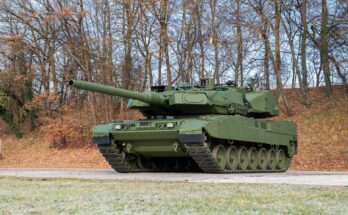At IDEX 2017, a military exhibition hosted in Abu Dhabi, Russian officials have been pushing a number of potential arms contracts with the United Arab Emirates.
Particularly over the last few years, Russia has landed a range of large military contracts in the Middle East and Africa regions, selling hardware from fighter jets to helicopters to tanks. Seeking to build on that success, Russian firms brought a significant amount of equipment to IDEX in Abu Dhabi.
Beyond its push for sales to the broader area, Russian firms are seeking contracts with the United Arab Emirates in a number of fields. The two sides signed an agreement covering cooperation in their defense industries.
On the second day of IDEX, the military exhibition’s spokesman, Rashid al-Shamsi, noted that the United Arab Emirates had signed agreements worth around 7 billion dirhams ($1.9 billion), with one of the largest contracts in that batch being a 2.6 billion dirham purchase of Russian anti-armor missiles.
According to al-Shamsi, Russian export agency Rosoboronexport will supply 5,000 anti-armor missiles of an unspecified type to the Emirati armed forces. Alongside the delivery, Russia will providing training and support services. Defense World reported that the system the United Arab Emirates purchased could be the Kornet-E.
In terms of other missile systems, Russian Industry and Trade Minister Denis Manturov said that Russia and the United Arab Emirates plan to discuss upgrading the Pantsir-S1 systems in Emirati service. The united Arab Emirates purchased 50 Pantsir-S1s in 2000.
“We’ll be holding talks on modernizing this type of combat hardware and I hope that colleagues will increase the volume of orders for new modifications. So far, we’re talking about modernization with an option of deliveries,” Manturov said, without specifying what sorts of upgrades were being discussed.
Military markets analyst, covering Eurasia, Middle East, and Africa.




